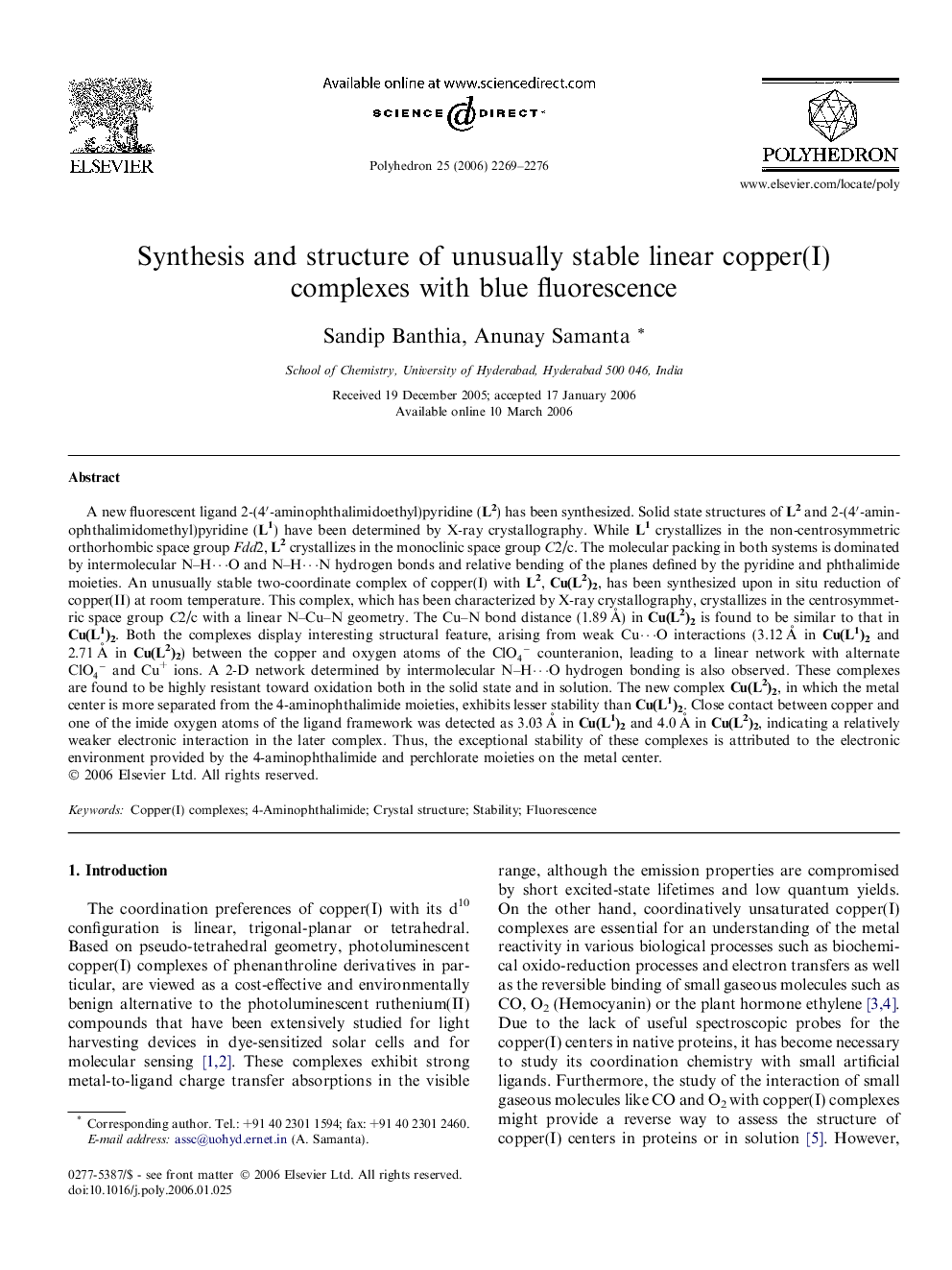| کد مقاله | کد نشریه | سال انتشار | مقاله انگلیسی | نسخه تمام متن |
|---|---|---|---|---|
| 1335719 | 979546 | 2006 | 8 صفحه PDF | دانلود رایگان |

A new fluorescent ligand 2-(4′-aminophthalimidoethyl)pyridine (L2) has been synthesized. Solid state structures of L2 and 2-(4′-aminophthalimidomethyl)pyridine (L1) have been determined by X-ray crystallography. While L1 crystallizes in the non-centrosymmetric orthorhombic space group Fdd2, L2 crystallizes in the monoclinic space group C2/c. The molecular packing in both systems is dominated by intermolecular N–H⋯O and N–H⋯N hydrogen bonds and relative bending of the planes defined by the pyridine and phthalimide moieties. An unusually stable two-coordinate complex of copper(I) with L2, Cu(L2)2, has been synthesized upon in situ reduction of copper(II) at room temperature. This complex, which has been characterized by X-ray crystallography, crystallizes in the centrosymmetric space group C2/c with a linear N–Cu–N geometry. The Cu–N bond distance (1.89 Å) in Cu(L2)2 is found to be similar to that in Cu(L1)2. Both the complexes display interesting structural feature, arising from weak Cu⋯O interactions (3.12 Å in Cu(L1)2 and 2.71 Å in Cu(L2)2) between the copper and oxygen atoms of the ClO4- counteranion, leading to a linear network with alternate ClO4- and Cu+ ions. A 2-D network determined by intermolecular N–H⋯O hydrogen bonding is also observed. These complexes are found to be highly resistant toward oxidation both in the solid state and in solution. The new complex Cu(L2)2, in which the metal center is more separated from the 4-aminophthalimide moieties, exhibits lesser stability than Cu(L1)2. Close contact between copper and one of the imide oxygen atoms of the ligand framework was detected as 3.03 Å in Cu(L1)2 and 4.0 Å in Cu(L2)2, indicating a relatively weaker electronic interaction in the later complex. Thus, the exceptional stability of these complexes is attributed to the electronic environment provided by the 4-aminophthalimide and perchlorate moieties on the metal center.
A two-coordinate linear complex of copper(I) based on the fluorescent 4-aminophthalimide platform has been synthesized by the in situ reduction of copper(II). This complex, which has been characterized by X-ray crystallography, reveals weak Cu⋯O interactions and strong intermolecular hydrogen bonding leading to interesting structural features and unusual stability towards oxidation both in the solid state as well as in coordinating or protic solvents.Figure optionsDownload as PowerPoint slide
Journal: Polyhedron - Volume 25, Issue 11, 31 July 2006, Pages 2269–2276